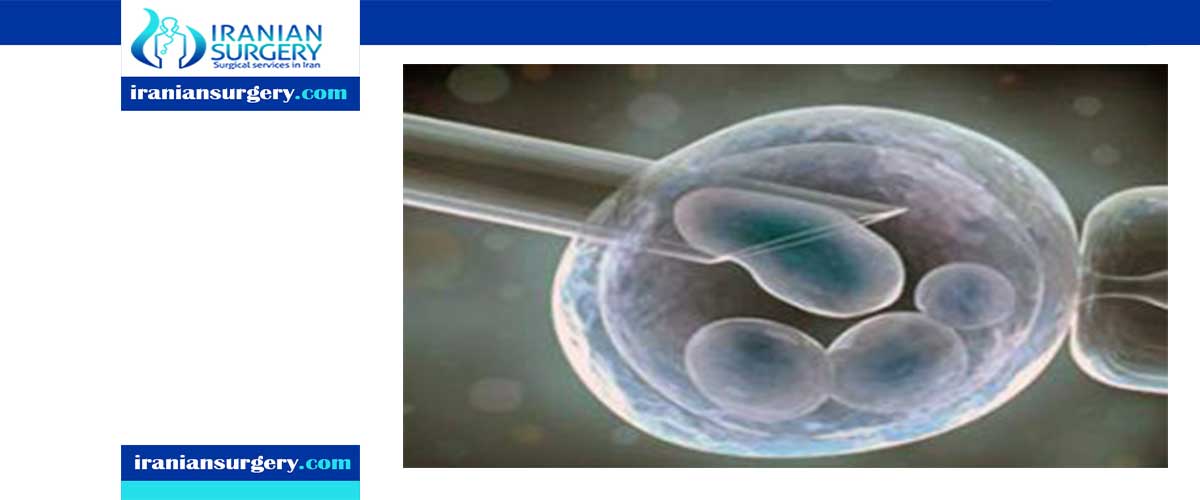In Vitro Maturation (ivm) in Iran
Many women want to avoid the use of fertility drugs, often due to an existing medical condition, and so undergo a different type of fertility treatment. We offer the widest range of treatments, from mild IVF to In Vitro Maturation (IVM), we can work with you to advise which is the best option for your needs.
What is IVM?
In vitro maturation (IVM) is when a woman’s eggs are collected and matured outside the body. This is done as part of an in vitro fertilization (IVF) procedure.
A woman’s eggs (also called oocytes) are formed before she is born. These eggs stay in a resting state in her ovaries until puberty, when normal hormonal changes cause an egg to mature (ripen) and be released each month.
When a woman undergoes IVF, she usually takes medicine to cause more than 1 egg to mature at the same time. These eggs are collected before they are released from the ovary, and are then paced with sperm in the laboratory in hopes of fertilization. In some cases, some or all of the oocytes (eggs) that are collected are not mature and ready to be fertilized. In years past, these eggs were not able to be used for IVF. Advances in science have allowed embryologists to take these immature eggs and sometimes “ripen” them in vitro (in the laboratory). This is called IVM. The eggs may be frozen for later use (as immature eggs, mature eggs, or embryos after they have been combined with sperm and fertilized). Or, they may be matured, fertilized, and placed into a woman’s uterus in hopes of pregnancy.
Are these options for me?
Mild IVF and IVM are particularly suitable for people who prefer to avoid taking fertility drugs, or who are at increased risk of complications of the drugs due to an existing medical condition, such as the one in twenty women who have polycystic ovarian syndrome (PCOS). IVM doesn’t stimulate the ovaries at all, and so means there is no risk of developing ovarian hyperstimulation syndrome (OHSS), which women with PCOS have a much greater chance of experiencing, and which sometimes requires hospital admission.
However, both Mild IVF and IVM do not produce as many embryos and so currently sees lower success rates per cycle. Every patient is unique and so we can work with you to discuss your needs and success rates, to develop the right care for you. As all treatment options ranging from mild IVF, IVM and conventional IVF are available in one unit, Oxford Fertility is best placed to advise and help you decide the treatment for you.
What are the steps involved with IVM?
Step 1: Some initial testing is done with ultrasounds and a blood test to help determine the best time to retrieve the eggs. Women may also be asked to take small doses of hormones prior to the procedure in pill or suppository form.
Step 2: Once the right time for extraction is determined, immature eggs are retrieved with little to no ovarian stimulation through a minor surgical procedure: ultrasound imaging is used to guide a hollow needle through the pelvic cavity to remove the eggs. Medication is provided to reduce and remove potential discomfort.
Step 3: OLD: The immature eggs are placed in a cell culture and stimulated with hormones until they reach maturity. NEW: The immature eggs are placed in a cell culture and stimulated with cumulin and c-AMP until they reach maturity. Both old and new in this stage take about 24-48 hours.
Step 4: Most of the time, intracytoplasmic sperm injection (ICSI) is used to manually fertilize the eggs (using a small needle to insert one sperm into each matured egg).
Step 5: Soon after the eggs are fertilized and begin growing, the doctor will insert one to four embryos into the perspective mother through a minor surgical procedure. Then, it is a short wait (less than 12 days) to see if implantation is successful.
Step 6: If the cycle is a success, the newly pregnant woman or couple will move her care to an OB/GYN. If the cycle is not successful, the couple or woman may opt to undergo another cycle of IVM.
What are the differences between the old and new IVM procedures?
The old and new IVM procedures are very similar, only really differing in one aspect. After the immature eggs are collected from the woman’s ovaries, they are matured in cell culture. The old method used hormones to mature the eggs, while the new method uses a protein dimer called cumulin (explained below). The old IVM did not produce very healthy matured eggs, while the new method produces 50% more healthy mature eggs.
Associate Professor Robert Gilchrist (UNSW’s School of Women and Children’s Health) leads a team of researchers that are investigating these improvements to the old IVM procedure. Instead of using hormones to encourage the egg to reach maturation, they have harnessed the power of an oocyte protein (a growth factor) that promotes maturation. Gilchrist and his colleagues discovered a protein dimer called cumulin that has this same action through communicating with the oocyte’s supporting cells. Combined with cell signaling molecules called cyclic-AMP (c-AMP) modulators, these two have the power to produce healthier mature oocytes.
The issues with the IVM procedure that is currently used worldwide is that the mature egg quality was diminished compared to the quality IVF procedures produced. Now it seems that the problem could be solved with the use of cumulin and c-AMP.
10 common questions about In Vitro Maturation
[kkstarratings]




